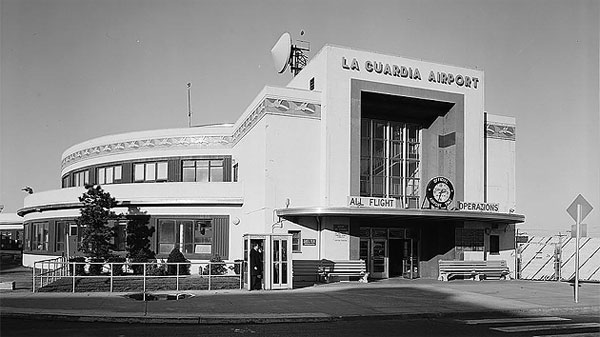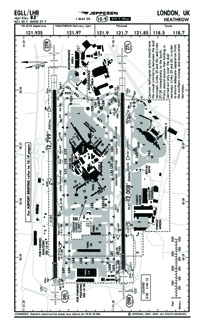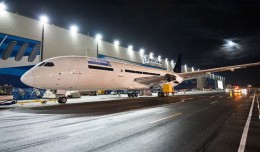
BA186 from Newark on very short final for runway 27R during a beautiful sunset in London. Some nice aircraft are visible in the picture as well as Terminal 5 towering over the old terminal complex. (Photo by Gordon Gebert Jr.)
London’s Heathrow Airport is an incredible airport to spot. The airport offers very accessible spots via walking and public transportation and the variety of aircraft you will see is like no other airport. If that is not enough, the airport also has frequent visits by head of state aircraft. Heathrow has two runways, with one used for departures, while the other is used for arrivals. At 6am and 3pm everyday the airport alternates runways. For weeks at a time the airport will operate the same alternation and then switch. For more information, see the Heathrow Runway Alternation Schedule. Although London is notorious for its foul and unpredictable weather, there are still plenty of patches of sun throughout the year and sometimes even cloudless evenings or mornings.
| Runway 09L/27R | |
|---|---|
| Dimensions | 12799 x 164 ft / 3901.1 x 50.0 m |
| Runway 09L | Runway 27R | |
|---|---|---|
| Longitude | -0.489428 / W 000° 29′ 21.94″ | -0.433261 / W 000° 25′ 59.74″ |
| Latitude | 51.477450 / N 51° 28′ 38.82″ | 51.477675 / N 51° 28′ 39.63″ |
| End Elevation | 0 ft. | 78.0 ft |
| Displaced Threshold | 1007 ft | 0 ft. |
| Runway 09R/27RL | |
|---|---|
| Dimensions | 12001 x 148 ft / 3657.9 x 45.1 m |
| Runway 09R | Runway 27L | |
|---|---|---|
| Longitude | -0.486772 / W 000° 29′ 12.38″ | -0.434078 / W 000° 26′ 02.68″ |
| Latitude | 51.464939 / N 51° 27′ 53.78″ | 51.464953 / N 51° 27′ 53.83″ |
| End Elevation | 0 ft. | 77.0 ft |
| Displaced Threshold | 1013 ft | 0 ft. |
| 1930s and 1940s Aviation at the location of what is now Heathrow Airport began during World War I, when the site was used as a military airfield. By the 1930s the airfield, then known as the Great Western Aerodrome, was privately owned by Fairey Aviation Company, and was used for aircraft assembly and testing. Commercial traffic used Croydon Airport, which was London’s main airport at the time. In 1943, Heathrow came under the control of the Air Ministry, to be developed as a Royal Air Force transfer station. Construction of runways began in 1944, on land that was originally acquired from the vicar of Harmondsworth. The new airport was built by Wimpey Construction,[13] and was named after the hamlet of Heathrow, little more than a row of isolated cottages on Hounslow Heath frequented by highwaymen; which was demolished to make way for the airport, and which was located approximately where Terminal 3 now stands. The Royal Air Force never made use of the airport, and following the end of World War II control was transferred to the Ministry of Civil Aviation on 1 January 1946. The first civil flight that day was to Buenos Aires, via Lisbon for refuelling.[citation needed] The official opening ceremony was performed on 25 March 1946 by Lord Winster, the Minister of Aviation. On 16 April a Panair Lockheed L-049 Constellation landed after a flight from Rio de Janeiro, the first aircraft of a foreign airline to land at Heathrow. The first BOAC scheduled flight departed for Australia on 28 May. This route was operated as a joint route with Qantas. The airport opened fully for civilian use on 31 May 1946, and by 1947 Heathrow had three runways, with three more under construction. These older runways, built for the piston-engined planes of that era, were each slightly longer than a mile in length, arranged in a 6-point star pattern to allow for all wind conditions. The temporary “prefab” passenger and cargo buildings were located at the northeast edge of the airport, just south of Bath Road. 1950s and 1960s The Oceanic Terminal (renamed as Terminal 3 in 1968) opened on 13 November 1961, to handle flight departures for long-haul routes. At this time the airport had a direct helicopter service from central London; there were also public viewing facilities and gardens on the roof of the Europa Building. By the time Terminal 1 was opened in 1968, completing the cluster of buildings at the center of the airport site, Heathrow was handling 14 million passengers annually. The location of the original terminals in the center of the site has since become a constraint to expansion. The decision to locate them there reflected an early assumption that airline passengers would not require extensive car parking, as air travel was then only affordable to the wealthy, who would often be chauffeur-driven. In the late 1960s a 160 acres (0.65 km2) cargo terminal was built to the south of the southern runway, connected to Terminals 1, 2 and 3 by a tunnel. 1970s to 1990s In 1977, the London Underground Piccadilly Line was extended to Heathrow; connecting the airport with Central London in just under an hour. On 23 June 1998 Heathrow Express started operating, providing a direct rail service to London’s Paddington station, via a specially-constructed line between the airport and the Great Western Main Line. Continued growth in passenger numbers to 30 million annually by the early 1980s led to the need for more terminal space. Terminal 4 was constructed to the south of the southern runway, next to the existing cargo terminal, and away from the three older terminals. It was connected with Terminals 1, 2 and 3 by the already-existing Heathrow Cargo Tunnel. Terminal 4 was opened by the Prince and Princess of Wales in April 1986, and became the home for then newly-privatized British Airways. In August 1982, the “Airport Spur” section of the M4 was opened to give the airport a direct link with the motorway and provide motorway access to airport users from as far away as the West Country and South Wales. Four years later, the M25 was completed as the London Orbital Motorway giving a direct motorway link to much of the rest of the country. In 1987, the UK government privatized the British Airports Authority (now known as “BAA Limited”) which controls Heathrow and six other UK airports. During the 1980s and 1990s, since privatisation, BAA has expanded the proportion of terminal space allocated to retailing activities, and has invested in the development of retail activity. This has included expanding terminal areas to provide more shops and restaurants, and routing passengers through shopping areas, in order to maximise their exposure to retail offerings. |
This page contains excerpts of Wikipedia entry London Heathrow Airport, shared under the GNU Free Documentation License. |








